
Geneticists eat coronavirus for breakfast! Except not actually. Because gross.
Although we are only three months into 2020, the world has already experienced a fair amount of trauma. From the massive wildfires that swept across southern Australia, to the deaths of Lakers star Kobe Bryant and eight others in a helicopter crash, it’s easy to say that this year is off to a rocky start.
 Australia on fire is just one of the tragedies the world has faced in 2020.
Australia on fire is just one of the tragedies the world has faced in 2020.
To top it all off, we are in the midst of a global health emergency, as declared by the World Health Organization (WHO) in February. If you haven’t checked any major news outlets in the past few weeks, do I have some news for you! How do I put this lightly?
Putting it lightly: The world is under biological attack.
Since December, biologists, epidemiologists, and virologists have been battling against an enemy that seems to have come straight out of a Stephen King novel. But before you start thinking this article is about Pennywise the Clown, I'd like to clarify. We're talking about the Wuhan coronavirus, a virus that has singlehandedly infected thousands of people in a little over three months. And as more people fall ill, it is clear that we need to bring out the big guns, and I’m not talking AK-47's. As we race against the clock to understand more about the Wuhan coronavirus, our secret weapon lies in the study of genetics.
The Who-han? What Coronavirus is and What Causes Coronavirus
Before we get into genetics, we need all the facts. What is coronavirus, really?
Although we use the term “coronavirus” to describe the infection that is making headlines around the globe, we should recognize that it is actually a very broad term. "Coronavirus" describes a diverse group of viruses that cause disease in mammals and birds. Coronaviruses are viruses in the family Coronaviridae. Their genetic information is stored in RNA, which is DNA’s single-stranded chemical cousin. Coronaviruses are enveloped viruses, which means a strong shield of proteins protects their surface. These shields help them avoid their host’s immune system. Also, they create distinctive spikes that look like the spikes on a crown or solar corona, giving the viruses their unique name. “Coronavirus” is derived from the Latin corona meaning crown or halo.
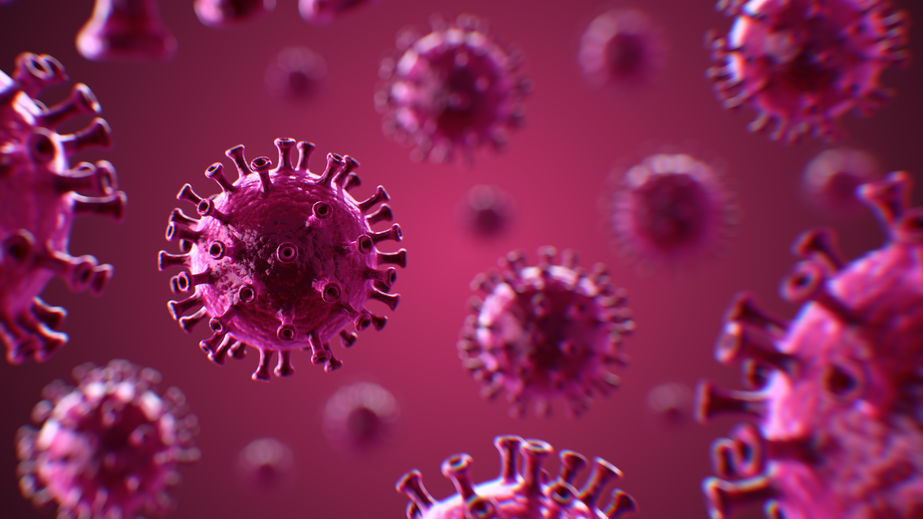 The spike proteins on the coronavirus give it its sun corona shape.
The spike proteins on the coronavirus give it its sun corona shape.
Scientists first discovered coronaviruses in the 1960’s as infectious bronchitis viruses (IBV) in chickens. They quickly linked the chicken bronchitis virus to viruses in human nasal cavities, and our knowledge grew from there. We are now aware of four major types of coronaviruses, known by the Greek letters alpha, beta, delta, and gamma.
The alpha and beta types are the ones that are known to infect humans. Furthermore, just four of them (229E, NL63, OC43, and HKU1) cause between one and three in every 10 cases of the common cold.
What Coronavirus Does
Coronaviruses affect many different species.
There are many different types of coronaviruses, and they affect (and infect) many different species. In general, coronaviruses infect the upper respiratory and gastrointestinal tracts in their hosts. For example, in cows and pigs, they are known to cause digestive issues. On the other hand, coronaviruses in chickens can cause upper respiratory disease such as IBV. Studies show that chickens with IBV are more prone to fowl moods (pun very intended).
Canine coronavirus occurs in dogs, and it is especially common in puppies. Although short-lived, it can cause a significant amount of abdominal discomfort for those poor pups. Likewise, coronavirus in cats is called feline coronavirus and exists in two forms. Feline enteric coronavirus is mild and causes minor illness. However, it can mutate into feline infectious peritonitis (FIP), it's much nastier cousin with a higher mortality rate. In other words, a case of FIP among the cast members of Cats the movie musical would have ruined the whole thing. Although according to critics, that seemed to happen on its own anyway.
The Wuhan coronavirus is the 7th coronavirus found in humans.
In humans, coronaviruses are usually responsible for mild respiratory infections with symptoms mimicking those of the common cold. Sometimes, human coronaviruses can also cause pneumonia and bronchitis. And some forms, such as the viruses that cause SARS and MERS, can be deadly. The virus SARS-CoV, discovered in 2003, and responsible for Severe Acute Respiratory Syndrome (SARS), is the most well-known coronavirus. Meanwhile, the virus that causes MERS, or Middle East Respiratory Syndrome, is deadlier, killing nearly three in every 10 victims. Both SARS and MERS are diseases that have caused global outbreaks in the past.

Now that we have a general sense of what coronavirus is and what it does, how do we differentiate it from the rest? At first, there was no official name besides Wuhan pneumonia or novel coronavirus. The World Health Organization has since labeled it COVID-19, but that's not as fun to say. So for the rest of this article, I will mainly refer to it as the Wuhan coronavirus.
How Coronavirus Works
Scientists discovered that the Wuhan coronavirus enters human host cells using the same doorway that the SARS virus uses. The doorway is an angiotensin converting enzyme (ACE2), which is a receptor protein on the host cell’s surface. This ACE2 acts as a landing pad that a coronavirus's “spike protein” attaches to. As mentioned before, spike proteins are what gives a coronavirus its characteristic, crown-like shape. The spike proteins help secure the virus to the ACE2 doorway on the host cell. Once it's attached, the virus is able to fuse with the host cell.
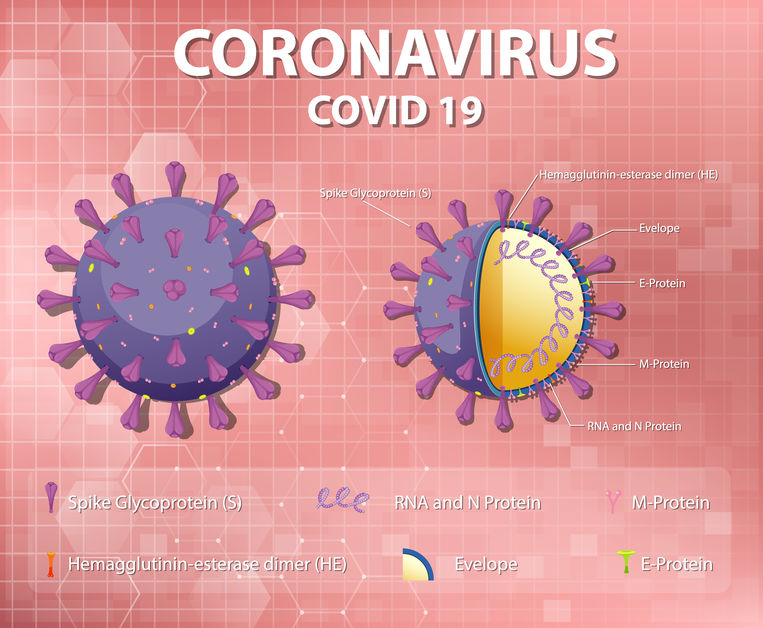 Diagram of a coronavirus.
Diagram of a coronavirus.
Taking a deeper look, the Wuhan coronavirus uses its spike proteins to latch onto the outside of a lung cell. Then, it uses those same spike proteins to penetrate far more deeply into the cell than any virus lacking spike proteins could. The ability to damage the lungs makes the Wuhan coronavirus especially serious in comparison to its cold-causing cousins.
Let's look at the numbers.
As of today, the Coronavirus Resource Center by Johns Hopkins University reports that the virus has sickened more than 826,479 people in China and abroad. World news outlets have recorded 40,636 deaths since Monday night. Although all the deaths have occurred in China, where the virus originated from, it remains unclear as to how deadly the virus is.
 Many people have resorted to wearing face masks.
Many people have resorted to wearing face masks.
The disease has been detected in at least 178 other countries, including: Malaysia, Thailand, Germany, Vietnam, Japan, Finland, Canada, Italy, India, Hong Kong, the United Arab Emirates, Taiwan, Singapore, Sri Lanka, Australia, Macau, France, Russia, South Korea, Britain, the Philippines, Nepal, and Cambodia. The New York Times has created a really great interactive map showing the international spread of the disease. Check it out here.
Additionally, there have been eleven confirmed cases in the United States. So far, there have been no deaths in U.S., and hopefully it stays that way! (This was written in January, and as of March 31st, 2020, there have been around 4,000 American deaths).
When the Wuhan Coronavirus Started and Where it Came From
On December 8th, as many people were preparing for the winter holidays, the first case of pneumonia from an unknown virus was reported in China. No one would know that it would grow into a global emergency practically overnight.
Let’s take a quick trip to Wuhan (but only theoretically because we’re trying to stay healthy here). It’s a central Chinese city located in the central province of Hubei, as well as a major transportation hub. Wuhan’s population hovers around 11 million, and one person happened to be at the right place at the right time. To get sick, that is. That unlucky individual would become the Wuhan virus’s first human host. So where did he or she become infected?
Welcome to the Wuhan wet market, now known as the birthplace of the Wuhan coronavirus.
 A seller prepares meat in a Chinese market.
A seller prepares meat in a Chinese market.
Do we know for sure that the Wuhan market is ground zero for the Wuhan coronavirus? Honestly, no. But there is strong evidence that supports that conclusion.
First, we know that coronaviruses are zoonotic, which means that they can be transmitted from animals to humans. Second, we know the pathways of previous coronaviruses. SARS first jumped from bats into raccoon dogs or palm civets and then into humans. On the other hand, MERS went from bats to camels to humans.
In these previous cases, the viruses existed within an original species for an unknown amount of time. They then mutated and migrated to other animal hosts before coming into contact with people. Finally, the virus would mutate for the last time before jumping to humans.
The Wuhan market is the perfect place for a coronavirus to hop from animals to people. It’s easy to believe that the market, known for selling processed meats and live consumable animals including poultry, donkeys, sheep, pigs, camels, foxes, badgers, bamboo rats, hedgehogs and a partridge in a pear tree (possibly), would be a good place for human-animal interaction.
It puts shoppers, vendors, and animals in extremely close proximity and creates an easy environment for outbreaks of disease. In a study published in the journal, The Lancet, scientists support the wet market theory. They found that of the first 41 patients with confirmed cases of the infection, two-thirds of them went to the Wuhan market.
As for the original host species of the Wuhan coronavirus, we are still putting the pieces together.
However, scientists have narrowed it down through the analysis of the virus’s genetics. Several analyses show the Wuhan coronavirus is very similar to the coronaviruses found in snakes or bats.
A group of scientists under the Journal of Medical Virology conducted multiple studies in order to pinpoint the original host. They discovered that the genetic code of 2019-nCoV is closely related to two bat SARS-like coronavirus samples from China. Thus, they concluded that, much like SARS and MERS, bats were the origin species of the Wuhan virus.
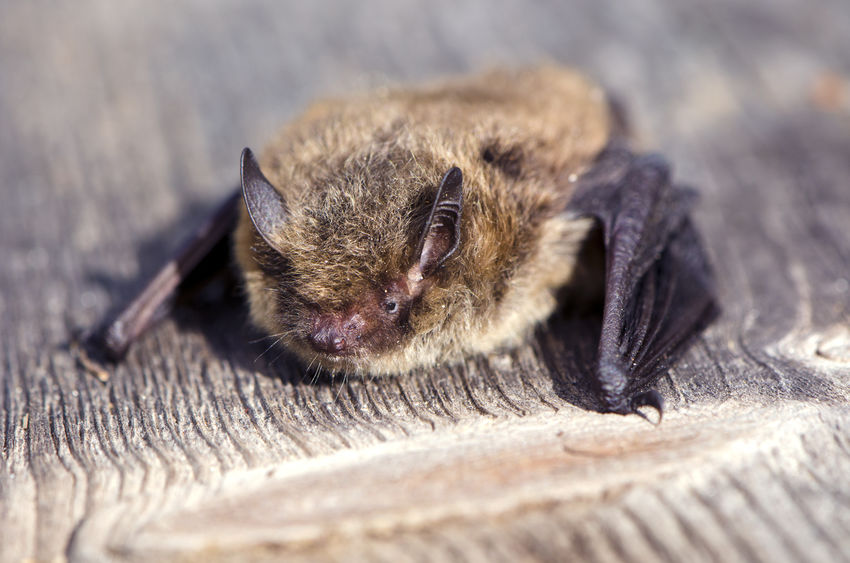 This Pipistrelle bat is related to the ones that could've been hosts for the coronavirus.
This Pipistrelle bat is related to the ones that could've been hosts for the coronavirus.
After additional research, the scientists discovered that the viral RNA coding sequence in the Wuhan virus was different from that in the bat coronavirus. This suggested that the bat virus may have mutated before infecting people. Therefore, there may have been an intermediate host species between bats and humans. The researchers then performed a more detailed analysis of the 2019-nCoV sequence and found that the coronavirus might actually have evolved more recently from a coronavirus in snakes. This discovery allowed them to connect the dots.
Things That Slither!
The scientists compared the protein codes in the Wuhan coronavirus to the protein codes from coronaviruses found in multiple different animal hosts. Mammals tested included marmots, manis, snakes, hedgehogs, and humans. They found that the protein codes in 2019-nCoV were the most similar to those found in snakes. With all this information, they came up with a credible explanation for the host pathway of the Wuhan coronavirus.
First, the original version of the coronavirus infects bats. Then, wild snakes hunt and eat those bats. A snake becomes infected through the consumption of an infected bat.
Reports show that although bats weren’t sold in the local market in Wuhan, snakes were. This raises the possibility that snakes are the missing link between bats and humans. The virus is therefore thought to have jumped from bats, the host species, to snakes, and finally to humans. The question remains as to how the virus could adapt to both cold-blooded and warm-blooded hosts.
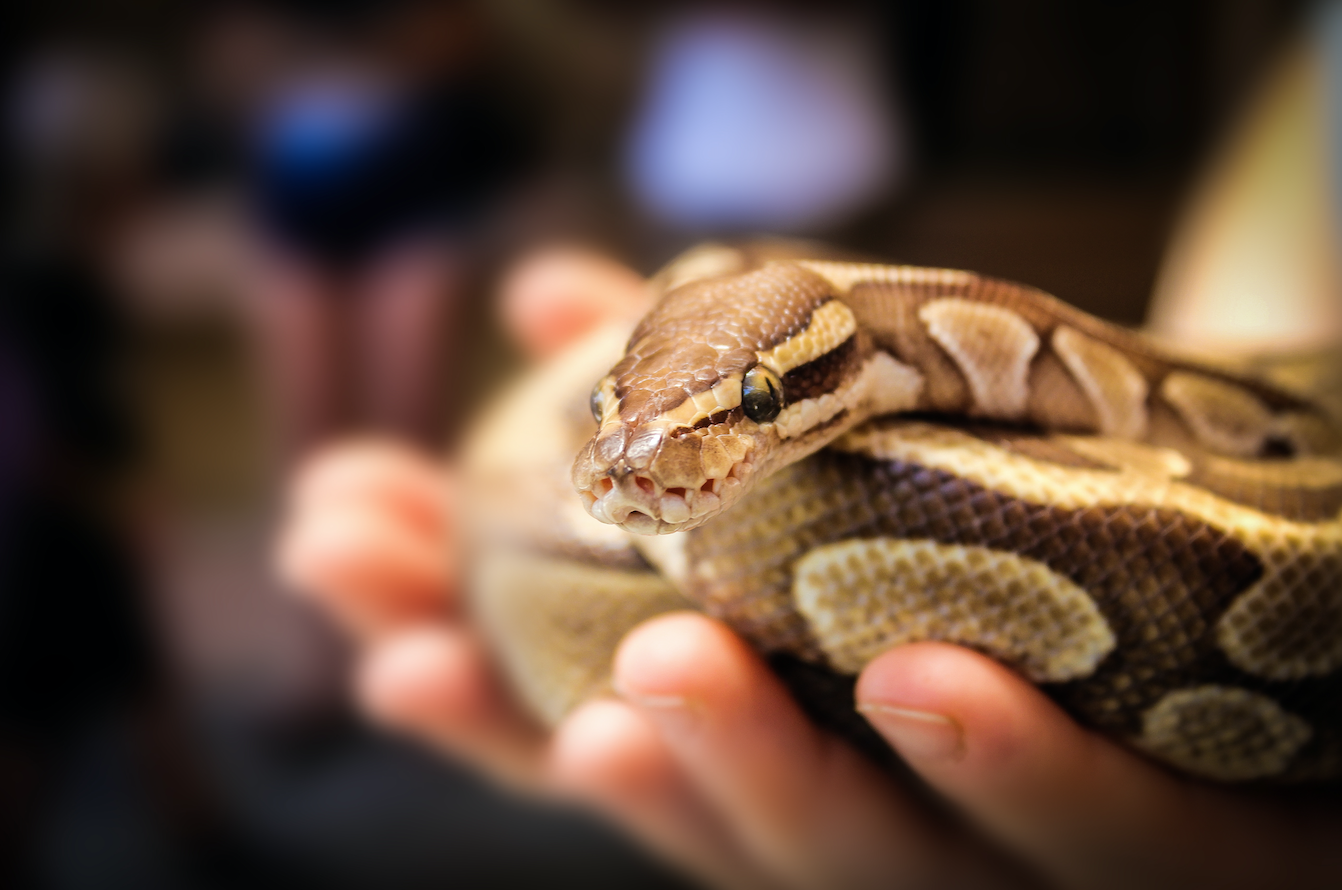 Scientists believe that the Chinese krait (not pictured), may be the secondary host.
Scientists believe that the Chinese krait (not pictured), may be the secondary host.
To prove their bat-snake-human theory, scientists would need to conduct more lab experiments. They stated that searching for the Wuhan virus sequence in snakes would take priority. They also acknowledged that they'd need to sample viral RNA from animals at the wet market. This would allow them to confirm the true origin of the virus.
Unfortunately, authorities in Wuhan have closed down the market, which makes it much harder to trace the virus’ hosts. Thus, the truth remains a mystery for the time being.
Wuhan Coronavirus Symptoms
 Many symptoms of the coronavirus are similar to those of the common cold.
Many symptoms of the coronavirus are similar to those of the common cold.
What are the actual symptoms of the Wuhan Coronavirus?
Experts say that the incubation period averages around three to six days. However, symptoms can develop anywhere from one to 14 days after exposure to the virus.
These symptoms can range from very mild to very severe. The most common symptoms reported in individuals suffering from the Wuhan coronavirus are fever, cough, and shortness of breath. Other rarer symptoms include a sore throat, runny nose, headache and diarrhea. Some people diagnosed with the infection have developed lower-respiratory tract complications such as pneumonia and bronchitis.
Generally, the symptoms are similar to those of the common cold, so people with mild cases may not seek care. This brings up the question of whether there may actually be more cases than we’re aware of. On the other hand, this would imply that the death rate may be lower than we initially thought.
People with weakened immune systems, pregnant women, infants, and the elderly may be at higher risk of developing complications. In a study conducted on 41 patients, some patients developed a dangerous immune system overreaction called a cytokine storm. Unfortunately, six of them ended up dying.
Can Coronavirus Kill You?
The short answer is yes. So far, the Wuhan coronavirus has led to over 40,600 deaths. However, looking at the facts may ease your fears. The median age of the people killed by the Wuhan coronavirus is 60 years old. Additionally, many people who passed away were already suffering from other underlying health issues like diabetes, high blood pressure, and Parkinson’s disease.
Also, influenza, or the flu, kills a much larger number of people around the world each year (as of March 31st -- this may change moving forward but only time will tell). The Wall Street Journal reports that so far, there have been 19 million flu cases and 10,000 deaths in the United States alone this season. So don’t be scared of the Wuhan coronavirus just because it’s the new kid!
Furthermore, the Wuhan coronavirus’s fatality rate still appears to pale in comparison in relation to the SARS fatality rate of 9.6%. Initially, the case fatality rate (CFR) was reported to be a shockingly high 15%, but this estimate was taken from a small group of hospitalized patients. In order to calculate an accurate CFR, scientists need a much larger number of people as well as the precise number of cases and the precise number of deaths. If you couldn't tell, calculating an accurate CFR can be difficult due to asymptomatic carriers of the illness. With more data, the CFR has been hovering around 3.4% in China and 0.4% around the world.
Some encouraging news is there have been 174,019 recoveries since the outbreak started, and that number is expected to rise. So for those of you googling “will coronavirus kill everyone,” the answer is -- and I can’t stress this enough -- NO. The Wuhan coronavirus may be getting extreme media coverage, but don’t lock yourself in your house and purchase a hazmat suit on Craigslist just yet.
If you are experiencing symptoms, it’s always a good idea to tell your healthcare provider about any contact with animals or recent travel. In this case, if you’ve traveled to China in the past month, it’s even more important to speak up. Your healthcare provider may order laboratory tests to detect any human coronaviruses.
Coronavirus Transmission
According to the WHO, authorities have only confirmed human-to-human transmission among families and in health care clinics. Meanwhile, the virus’s efficiency to pass from person to person remains unknown. Coronaviruses in general are believed to be transmitted through tiny respiratory droplets. These droplets are produced when you breathe, talk, cough, or sneeze.
Other forms of transmission include touching an infected person’s hands or face and fecal-oral transmission, which is just as unpleasant as it sounds. One encouraging fact is that coronaviruses in general can only travel around six feet from an infected person. Knowing this, maybe it’s a good idea to keep a six foot radius between yourself and others. Also, try to actively avoid crowded spaces for the next few months.
 Masks are becoming a popular preventative measure in many countries.
Masks are becoming a popular preventative measure in many countries.
There is one detail that should be included. Identifying and isolating the virus before it spreads to others may be harder than initially suspected. One study stated that out of every confirmed case of the Wuhan coronavirus, one child did not show any symptoms. This raises suspicions of the virus being asymptomatic, meaning people may be releasing infectious particles before they even show symptoms. If this is the case, it could complicate controlling the epidemic. It remains unclear whether a person can spread the Wuhan coronavirus before symptoms develop. Further, scientists haven't yet determined whether the severity of symptoms influence how easily an infected person can spread the virus.
The prevention or hindrance of transportation helps stop the spread of illness and prevents it from spreading internationally.
Chinese authorities have since closed off Wuhan, grounding planes at the Wuhan airport and trains departing the city. They have also suspended ferries, busses, and subways within the border for the time being. These restrictions currently affect tens of millions of people living in Wuhan and surrounding cities.
According to experts, the lockdown may have occurred too late, and it could actually be hurting people more than helping. Although the lockdown slows the outbreak, it also limits access to food and medicine for Chinese citizens. In addition to shutting down transportation, Chinese officials have suspended the trade of wild animals in China. They have also closed all schools, restricted access to Beijing’s Great Wall, and halted tourist activities. China’s swift response to the outbreak has been a notable contribution to slowing the overall spread of the disease.

Overseas, the U.S. as well as other countries have begun screening passengers arriving at national airports. Passengers who appear ill are immediately quarantined. Delta, American Airlines, and United Airlines have suspended all flights between mainland China and the U.S. Furthermore, all U.S. flights from China are being designated to just a few select airports, such as Kennedy Airport and San Francisco International Airport.
The Trump administration is temporarily implementing travel restrictions on foreign nationals coming from China. Any foreign nationals who have traveled to China in the past two weeks aren't allowed to enter into the U.S. Meanwhile, a few countries, including Russia, Vietnam, and Kazakhstan, have temporarily stopped travel to and from China.
Early detection and quarantine remains the best method to prevent the outbreak’s spread.
Can Coronavirus be Cured/Treated?
No cure exists for coronaviruses in general, so all doctors are able to do is treat their symptoms. As for treatment, they have tested a few different strategies. The National Health Commission reported that they gave a combination of antiretroviral drugs, lopinavir and ritonavir, to some patients at Chinese hospitals. Doctors usually administer these drugs to treat HIV. This strategy seems to be effective, as researchers saw a mainly positive response in their patients.
Is There a Coronavirus Vaccine?
Scientists at home and abroad are currently working around the clock to create a safe and effective vaccine before the outbreak is under control.
For example, scientists at the University of Queensland in Australia are working on a self-described “molecular clamp”to craft a vaccine. This method tricks the body into thinking it is seeing a live virus. It then pushes the body to create antibodies to combat that virus. This approach has shown promising results in lab tests against other dangerous viruses such as Ebola and MERS.
Similarly, other scientists are looking at technologies that have been developed against past coronaviruses such as MERS and SARS. They are turning to infection-fighting proteins called monoclonal antibodies (mAbs) in the hopes that the similarities between the coronaviruses will offer an adequate amount of overlap to help infected people.
Even though the scientific community’s response to the latest coronavirus has been quick, the New York Times reports that a vaccine is still at minimum a year away. Historically, vaccines have been among the best public health tools invented to prevent disease. But creating them is an expensive and time-consuming process. It can take months and even years to put a vaccine to public use. This is because each vaccine needs to undergo extensive testing on both animals and humans first.
 Multiple research teams are currently working to create a vaccine.
Multiple research teams are currently working to create a vaccine.
It is important to keep in mind that researchers across the globe are still developing vaccines for both SARS and MERS.
Yet, creating vaccines isn’t worthless work. Vaccines may not help in the very early stages of an outbreak, but they are an important asset to have. They will always be helpful in preventing the spread of the disease or future outbreaks.
With each new outbreak of a viral disease, scientists basically have to start from scratch. When the SARS outbreak happened, it took researchers around 20 months to get a vaccine ready for human trials. They had to wait two years to test it on humans, and it still isn’t available to the public yet. Several companies such as Moderna, Novavax and Inovio are leading the charge to develop the Wuhan coronavirus vaccine. They hope to shave down the development time through the use of the best weapon in our arsenal: genetics.
In This War Against the Wuhan Coronavirus, Here’s Why Genetics is Our Best Weapon
Many people associate genetics with DNA tests, such as the ones provided by CRI Genetics, or forensics for solving crime, but it goes so much deeper than that.
 The study of genetics is an important asset in the fight against coronavirus.
The study of genetics is an important asset in the fight against coronavirus.
Our knowledge of genetics increases every day, and it is vitally important in relation to deadly infections. In fact, without the study of genetics, we would be relatively defenseless in combating viral diseases. Knowing the genetics of a virus tremendously speeds up the process of finding a vaccine.
The secret to beating the outbreak is locked away in the genetic code of the Wuhan coronavirus’s genome. A genome is an organism’s entire hereditary information. A genetic information carrier, usually DNA, encodes this information. In the case of coronaviruses, this genetic information carrier is RNA. The only way to crack the code is with genetics. Scientists can sequence the virus’s genome using various technologies to figure out crucial information. From its genome, we can tell how the virus operates inside its host and how it mutates. The genome provides a roadmap for developing diagnostic tests and eventually a vaccine.
After officials reported the first case of the infection, scientists in China immediately rushed to sequence the virus’s genome. They made it publicly available on January 10th, allowing scientific research teams all over the world to begin working on it right away. Within hours, many teams had pinpointed the letters of the genetic code. Many are currently using those codes now to create a vaccine. From the genome, which is 29,903 nucleotide bases long, we are currently excavating as much as we possibly can.
Scientists around the globe are working towards the common goal of preventing the virus from spreading.
It is through genomic analysis that we figured out that the Wuhan coronavirus enters human cells using the same doorway as the SARS virus. Knowing this, we can determine exactly which protein we need to target (the spike protein which forms the crown of the coronavirus) in order to make a working vaccine.
Kizzmekia Corbett, the scientific lead on one American coronavirus team, breaks it down: “If you can block the spike protein from binding to a cell, then you’ve effectively prevented an infection.”
With this information, scientists can modify the template for the SARS vaccine by swapping in the Wuhan virus genetic code to make the vaccine work for the Wuhan coronavirus.
And this is exactly what vaccine research groups at the National Institutes of Health in Maryland did. They created the new sequence and sent it to scientists at Moderna. The Moderna scientists plan on using the genetic information to identify the spike proteins. From there, they can induce high levels of antibodies to fight off a Wuhan coronavirus infection. They are pushing to test the first number of experimental vaccines on mice infected with the virus. Afterwards, they hope to use the vaccine in trials on humans, all in a record-breaking three months. If they succeed, it will be the fastest a vaccine of this caliber has ever gotten off the ground. Even though the public may not see the vaccine for another year, there is no doubt that genetics has sped the process along at an incredible rate.
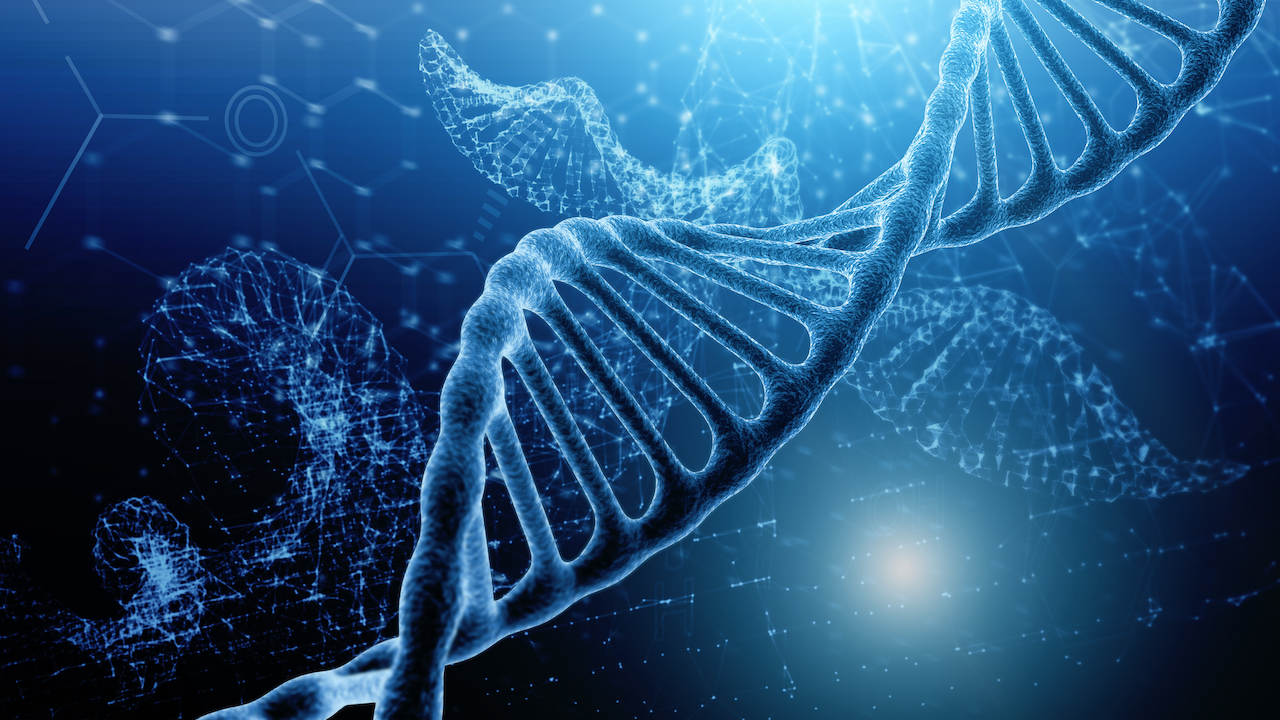
Advances in genetics give us the power we need to beat the coronavirus.
We’ve learned a lot from the past. When there’s a global outbreak of a coronavirus, time is of the essence. And the study of genetics itself has improved a lot over the past decade. Advancements in genomics and improved global coordination are allowing researchers to move at unprecedented speed. However, it hasn’t always been this way.
When the SARS coronavirus appeared in 2003, it took scientists much longer to sequence. The infection’s peak occurred in the middle of February 2003, and scientists didn't sequence the complete SARS genome of 29,727 nucleotide bases until April 2003. Now, geneticists around the world work at a much faster pace.
Another reason why genetics has been so crucial is because it allowed us to understand the origins of the virus (the bat-snake-human host pathway). Although we don’t know which animal species is the true culprit, genetics brought us pretty darn close. Furthermore, the genetics reveal the Wuhan coronavirus is 96% identical to the coronavirus found in bats. Scientists came to this conclusion based on analyses of the genomes of both viruses.
The genome also tells us that the jump from animal to human was a one-time-only occurrence.
The genomes would be much more diverse if there had been multiple introductions of the virus, or jumps from animal to human. Thus, it is highly likely that there was only a single introduction to humans from an animal species. This provides a solid explanation for what’s sustaining the outbreak. For example, the virus could be thriving on new animal hosts, but analysis of the genome proves otherwise. Instead, it suggests that human-to-human transmission is the pathway that is most likely sustaining the spread of the virus. The Chinese authorities shut down the marketplace in Wuhan to prevent more animal-to-human transmission, but we should really be more cautious of human-to-human transmission.
Genetics also allow us to determine the true timing of the first cases of the disease. The Wuhan coronavirus has the ability to mutate at a very rapid rate. By comparing 24 available genomes from samples taken from cases in Shenzhen, Thailand and Wuhan, scientists have a better estimate of when the infection began. The samples show very limited genetic variation from each other, which strongly suggests that they all mutated recently.
So how does comparing the genomes of the viruses from these samples tell us when the infection started? Viral genomes can mutate at a pretty quick rate. Therefore, if the Wuhan coronavirus had been circulating for a long before the first case was reported on December 8th, the 24 genomes from the given samples would differ a lot more from each other than they currently do. And the knowledge of rates of viral evolution extends even further! Scientists estimate that the original coronavirus that all the others descended from appeared no earlier than October 30th and no later than November 29th.
What’s Next?
Since you are practically an expert on the Wuhan coronavirus now, your next step is to stay healthy!
Just take the precautions you normally would during flu season. Wash your hands after touching public surfaces, distance yourself from people who are under the weather, and avoid sticking your hands in your mouth or nose.
Also, stay informed whether it’s through local news outlets or articles like this one!
And it’s probably not the smartest idea to travel anywhere anytime soon. Stay safe.
If you liked this article or found it helpful, be sure to pass it along! Leave any questions, concerns, or suggestions for what you want to read about next week in the Comments Section below.
References
- https://www.statnews.com/2020/01/24/dna-sleuths-read-coronavirus-genome-tracing-origins-and-mutations/
- https://www.statnews.com/2020/01/24/coronavirus-infections-no-symptoms-lancet-studies/
- https://www.thelancet.com/journals/lancet/article/PIIS0140-6736(20)30183-5/fulltext
- https://www.thelancet.com/journals/lancet/article/PIIS0140-6736(20)30154-9/fulltext
- https://www.cdc.gov/coronavirus/2019-ncov/about/transmission.html
- https://www.businessinsider.com/china-wuhan-coronavirus-compared-to-sars-2020-1
- https://www.biorxiv.org/content/10.1101/2020.01.23.916395v1.full.pdf
- https://www.jpost.com/International/With-Wuhan-coronavirus-genetic-code-cracked-scientists-begin-work-on-a-vaccine-615518
- https://www.scmp.com/news/china/science/article/3047709/genetic-and-drug-trail-contain-deadly-coronavirus-china
- https://www.ncbi.nlm.nih.gov/pubmed/16877062
- https://onlinelibrary.wiley.com/doi/abs/10.1002/jmv.25682
- https://www.pittwire.pitt.edu/news/snakes-could-be-original-source-new-coronavirus-outbreak-china-0
- https://onlinelibrary.wiley.com/doi/abs/10.1002/jmv.25682
- https://www.nytimes.com/interactive/2020/world/asia/china-coronavirus-contain.html
- https://www.businessinsider.com/china-wuhan-coronavirus-compared-to-sars-2020-1#the-wuhan-coronavirus-unlike-sars-isnt-considered-a-pandemic-6ttps://
- https://www.bbc.com/news/world-51318246
- https://www.britannica.com/science/RNA